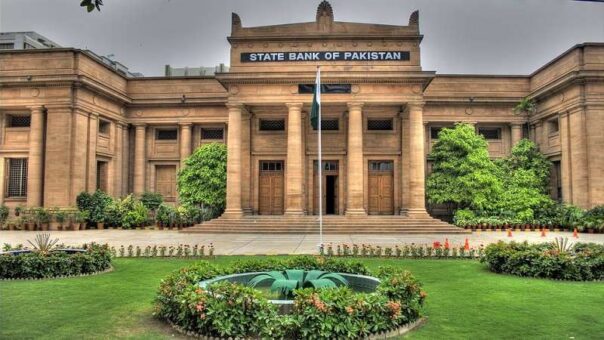Karachi, February 12, 2024 – Pakistan’s economic landscape is grappling with a significant challenge as the State Bank of Pakistan (SBP) reveals that the country’s public debt has surged to 74.8 percent of the Gross Domestic Product (GDP) by the end of December 2023.
The latest data, released on Monday, highlights a substantial increase in gross public debt, reaching Rs 67.33 billion, representing a worrisome trend for policymakers.
Comparing the figures with the same period in 2022, the central bank reports a staggering 27.57 percent increase in gross public debt, rising from Rs 52.78 trillion to the current Rs 67.33 billion. This surge raises concerns about the sustainability of the country’s fiscal policies and the ability to manage its debt burden effectively.
The GDP for the period has been calculated at Rs 84.07 trillion, emphasizing the widening gap between economic output and the escalating debt burden. The current level of public debt exceeds the limit set by the Fiscal Responsibility and Debt Limitation Act, 2005 (FRDLA) amended in June 2017, which restricts the total government debt to 68.7 percent of the GDP.
According to FRDLA, “Total Debt of the Government” includes the debt serviced from the consolidated fund and the debt owed to the International Monetary Fund (IMF), excluding accumulated deposits of the Federal and Provincial Governments with the banking system.
The SBP’s report discloses that the government’s domestic debt has surged to Rs 42.59 trillion by December 2023, a significant increase from Rs 33.19 trillion recorded a year earlier. Simultaneously, external debt has also witnessed a substantial rise, reaching Rs 22.60 trillion by December 31, 2023, as opposed to Rs 17.88 trillion a year ago.
A notable contributor to the escalating debt is the borrowings from the International Monetary Fund (IMF), which have surged to Rs 2.14 trillion for the period, compared to Rs 1.72 trillion in the previous year. The reliance on external funding, especially from international institutions, raises questions about the country’s ability to sustain its economic policies without jeopardizing its fiscal stability.
Furthermore, the data reveals a significant increase in external liabilities, soaring to Rs 3.36 trillion by the end of December 2023, compared to Rs 2.48 trillion in the preceding year. The total external debt and liabilities have reached Rs 36.98 trillion by December 31, 2023, a marked increase from Rs 29.12 trillion recorded a year ago.
As Pakistan grapples with the economic challenges posed by the escalating public debt, policymakers are urged to reassess fiscal strategies and explore avenues for sustainable economic growth. The need for prudent financial management and strategic debt reduction measures becomes imperative to ensure long-term economic stability and resilience against external shocks.
